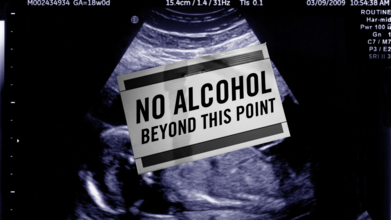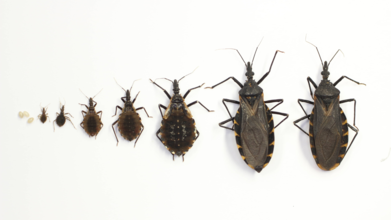- Health Conditions A-Z
- Health & Wellness
- Nutrition
- Fitness
- Health News
- Ayurveda
- Videos
- Medicine A-Z
- Parenting
- Web Stories
Against Medical Evidence, Louisiana Lawmakers Deny Abortion Access To Rape Victims

Credits: Canva
For the third consecutive year, Louisiana lawmakers have rejected a bill that would have allowed abortion access to minors who become pregnant as a result of rape. The proposed legislation, authored by Democratic Representative Delisha Boyd, sought to expand the state’s near-total abortion ban by permitting exceptions for girls under the age of 17 who are victims of sexual assault.
In an emotionally charged legislative committee meeting on Tuesday, several lawmakers cited their religious beliefs as the reason for voting against the measure. Despite impassioned pleas from supporters of the bill, it failed in a 3-9 vote, with two Democrats joining Republicans in opposition.
Also Read: Aamir Khan Opens Up About His Son Junaid's Struggle With Dyslexia
Abortion Law in Louisiana: A Deeply Personal and Painful Debate
Both Boyd and fellow Democratic Representative Patricia Moore have personal ties to the issue—they were born after their mothers were raped as teenagers. Boyd, born in 1969, just four years before Roe v. Wade legalized abortion nationwide, emphasized that her mother did not have a choice. “I know the Bible. But I also know God gives people the ability to do right and wrong,” she said during the hearing.
Moore, who represents a deeply religious constituency, expressed her inner turmoil over the bill. “I’m struggling because life and death, according to our Heavenly Father, it’s in His hands,” she said. Moore shared the tragic example of a pregnant nine-year-old girl in her district, adding to the gravity of the debate. Yet, she concluded that she could not support the bill, citing her faith and belief in divine purpose: “God would take a bad situation and turn it into good.”
Also Read: Try These 6 Low-Impact Cross-Training Moves That Actually Work
Abortion Laws in Louisiana: A National Outlier
Louisiana has one of the strictest abortion bans in the United States. The law, triggered in 2022 after the Supreme Court overturned Roe v. Wade, prohibits abortion at all stages of pregnancy. The only exceptions are when the mother’s life is at substantial risk or in cases of “medically futile” pregnancies—where the fetus has no chance of survival outside the womb.
Also Read: Exercise Proven ‘Better Than Drugs’ To Prevent Colon Cancer Recurrence, Study Trial Shows
The proposed rape exception would have added a critical layer of compassion for minors suffering extreme trauma. Advocates argue that forcing young rape survivors to carry pregnancies to term not only inflicts further psychological harm but also endangers their physical health. Louisiana, notably, has one of the highest maternal mortality rates in the country, making forced pregnancies even more dangerous for young girls.
Why It Matters: The Health and Rights of Survivors
The rejection of the bill in Louisiana is part of a broader trend seen in several Republican-led states that have enacted strict abortion bans with few or no exceptions. According to a study published in the Journal of the American Medical Association, between July 2022 and January 2024, more than 64,000 pregnancies resulted from rape in states where abortion is mostly or completely banned.
Of the 12 U.S. states enforcing total abortion bans, only four currently allow exceptions in cases of rape. Louisiana is not among them. This places an immense burden on victims, especially minors, who must either carry an unwanted pregnancy to term or travel across state lines to access care—an option not available to all due to financial, logistical, or legal barriers.
A 2019 Study titled They Are Girls, Not Mothers: The Violence of Forcing Motherhood on Young Girls in Latin America, published in Health and Human Rights Journal while looks specifically at the Latin America population, it does note for the risk it presents for the young pregnant girl, physically and mentally. The study also cites the Stolen Lives report, published by Planned Parenthood Global, it notes of the severe impact that forced motherhood and pregnancies have on women. The report also speaks to the experience of 2 million girls under 15 worldwide, who are compelled to give birth every year as a result of sexual violence.
"There are severe physical, mental, and social health impacts of forced pregnancies and motherhood," notes the study.
Physical Consequences
Research has consistently shown that forced pregnancy carries severe health risks for young girls. Among the most serious physical complications are preeclampsia and preterm labor. The danger is especially high for adolescent girls—studies show that the risk of dying during childbirth is four times greater for girls than for adult women. In fact, pregnancy and childbirth are the leading causes of death for girls aged 15 to 19 worldwide.
There are also less-documented harms. Survivors of sexual violence, particularly young girls, often face obstetric violence and mistreatment in medical settings. Healthcare providers may deny them the specialized reproductive care they need or treat them with insensitivity, ignoring the trauma and vulnerability of their situation.
In countries like Guatemala and Nicaragua, Caesarean sections have become common for adolescent pregnancies—not due to medical necessity, but because of a lack of training among medical professionals to support the specific needs of young survivors of sexual violence. These early surgeries can have long-term consequences, including surgical complications and the risk of adhesions later in life.
Psychological and Emotional Toll
The mental health impact of forced motherhood is equally severe. Feelings of anxiety, depression, fear, and hopelessness are common. Investigations by Planned Parenthood Global have linked such pregnancies to suicidal ideation and attempts, especially in places where reproductive choices are heavily restricted.
A 2019 report titled Silenced Lives found that in Alta Verapaz, Guatemala, 50% of the teenage girls who died by suicide in 2017 were pregnant. One such girl, Juana, became severely depressed after her pregnancy. In her own words: “I want to die; my heart is not happy like before.”
Social Impact
Forced motherhood drastically reshapes the social trajectory of young girls. According to the Stolen Lives report, teenage pregnancy often leads to girls dropping out of school, missing employment opportunities, and falling into cycles of poverty and dependence. Many never return to education and become stuck in low-wage jobs, prolonged unemployment, or abusive relationships.
- Teen mothers are statistically more likely to:
- Not complete high school
- Work in low-income or unstable jobs
- Depend on welfare
- Become single parents
- Live in poverty long-term
In the study spanning four countries, 33% of the girls had only attended primary school. Without education or income, these girls lose not only their future prospects but also their sense of belonging. They are often removed from school and peer groups, isolated from community life, and pushed into adult roles they are unprepared for.
Pregnancy at such a young age reinforces harmful cultural stereotypes about gender, sexuality, and power. Girls like Juana, who wished to finish school, often end up in government shelters until they reach legal adulthood, stripped of autonomy and burdened with responsibilities well before their time.
The Path Forward: Choice, Compassion, and Health
Supporters of the bill argue that being pro-life should also mean valuing the lives and mental well-being of children who are victims of sexual assault. As Boyd said, “We should also be fighting for the life of those children who are raped and molested.”
While the measure failed again this year, the growing body of evidence and rising national awareness about the consequences of such bans suggest that the debate is far from over. For now, young rape survivors in Louisiana will continue to face some of the harshest abortion restrictions in the nation—caught at the intersection of trauma, law, and faith.
Disposable Face Masks From The Covid-Era Are Turning Into Toxic Microplastics Bombs

Credits: Canva
When COVID-19 ravaged the globe, disposable face masks became a instant necessity and a sign of protection. They provided a layer of protection against the spread of the virus, it became mandatory in most settings, and were mass-manufactured to address the urgent need. But new research indicates the same masks that protected us throughout the pandemic can now be leaving a toxic trail behind.
A paper by scientists at Coventry University, published in Environmental Pollution, has established that disposable masks are leaching microplastics and toxic chemicals, such as endocrine disruptors, into the environment. This chemical fallout could have long-term impacts on human health, wildlife, and ecosystems globally, scientists warn.
During the height of the pandemic, the world consumed a projected 129 billion single-use face masks monthly. The majority were composed of polypropylene and other plastics and were meant to be used once and then discarded. Without a proven recycling stream, they wound up in landfills, scattered on urban streets, or carried by rain into rivers and oceans.
Also Read: Could A Daily Pill Restore Brain Function After Stroke? Scientists Test Bold New Treatment
These masks have started to degrade over time. Field studies in recent times have reported abandoned masks in soil, on beaches, in water bodies, and even in rural areas far from civilization. As they disintegrate, they do not vanish—they scatter tiny fragments of plastic and chemical additives in the environment.
Dr. Anna Bogush, the lead author of Coventry University's study, refers to this as a pressing problem. "We can no longer overlook the environmental price of single-use masks, particularly when we have learned that the microplastics and chemicals they emit have a detrimental impact on human beings and ecosystems alike," she stated.
Why Testing the Disposed Masks Is Essential?
To find out what happens to masks when they disintegrate, Bogush and co-researcher Dr. Ivan Kourtchev did a simple but insightful experiment. They put fresh, unused masks—surgical masks as well as filtering facepieces like FFP2 and FFP3—into glass flasks of distilled water. The water was filtered after 24 hours at room temperature and then tested using sophisticated laboratory methods.
The findings were alarming. Each mask, whether it was a surgical, cloth or respirator, emitted microplastics. But filtering facepieces, commonly sold as the most effective level of protection amid the pandemic, lost four to six times more particles than basic surgical masks.
Most of them were small—less than 100 micrometers, about the diameter of a human hair—and consisted mainly of polypropylene. Small amounts of polyethylene, polyester, nylon, and PVC were present. These substances do not biodegrade readily, so they linger for decades in the environment.
Invisible Pollutants With Visible Consequences
The worry is not limited to plastics. The study found that masks also emitted chemical additives, such as Bisphenol B (BPB), a chemical that has been found to act like estrogen and interfere with hormonal systems in humans and animals.
The scientists estimated that at the peak of the pandemic, disposable masks released between 128 and 214 kilograms of BPB into the environment. That might seem insignificant compared to global levels of pollution, but the total effect of endocrine-disrupting chemicals—no matter how low the dose—has been found to influence fertility, development, and hormone function in humans and wildlife.
Microplastics, similarly, are not inert trash. When ingested by fish, birds, or small animals, they can become concentrated further up the food web, finally ending up in human diets. Microplastics have already been detected in seafood, tap water, and even in human lungs and blood.
Why Are These Disposable Masks Now Posing A Risk To Human Health?
The threats from microplastics and endocrine disruptors are multifaceted and as yet not fully appreciable, but the preliminary evidence is alarming.
Hormonal interference: Substances such as BPB have the potential to disrupt reproductive health, fetal growth, and metabolism.
Breathing difficulties: Microplastics inhaled through air can settle in lung tissue, leading to inflammation or other respiratory disorders.
Contamination of the food chain: Plastics carried by rivers, oceans, and land can contaminate crops and animals, with the risk of exposing individuals through food intake.
Scientists emphasize that this is not a standalone problem. Disposable masks are one part of a broader plastic pollution plague, which already encompasses bottles, bags, packaging, and man-made fabrics. But the unprecedented rate at which masks were used during the pandemic generated a shock and intense period of pollution.
Disposable Face Masks Have An Environmental Burden That Lingers
In contrast to biodegradable trash, the plastics found in disposable masks resist natural decay. One mask might take decades to degrade, releasing microplastics and chemicals along the way. For already plastic-stressed ecosystems, masks provide another source of stress.
Wildlife scientists have documented instances of animals getting tangled up in mask straps or eating shredded pieces. Marine ecosystems are especially at risk, since microplastics can settle into sediment and wreak havoc on entire food webs.
The environmental effect isn't quite even, however. Low- and middle-income nations, which frequently do not have effective waste management systems, bear a disproportionate weight of mask pollution.
The authors of the study contend that society must reexamine mask production, usage, and disposal. Single-use masks may have been necessary amid a peak health emergency on a global scale, but to continue using them without sustainable options threatens long-term damage.
The pandemic compelled billions of individuals to shift toward protective behaviors in one night. Masks helped save lives, safeguarded frontline health staff, and contributed significantly in slowing down the transmission of COVID-19. But their environmental legacy serves as a reminder that timely solutions to one crisis can generate new problems unless sustainability is made a part of the equation.
As the world prepares to face the next public health threat, safety gear can't be designed to be as if it stops with the disposal. The decisions we make today regarding manufacturing, using, and throwing away will resonate for decades in the environment and in our bodies.
Disposable masks were probably necessary in 2020, but by 2025, they are also a harsh reminder that each protective act has an unseen price tag. The only question is whether we will take action on this information before the chemical timebomb ticks again.
International Fetal Alcohol Syndrome Day 2025: Themes, Significance And History

Credits: Canva
September is globally recognized as Fetal Alcohol Spectrum Disorder (FASD) Awareness Month, with September 9 dedicated to International FASD Awareness Day. This year, 2025, carries the powerful theme “Everyone Plays a Part: Take Action!”, a reminder that preventing FASD and supporting those affected is a collective responsibility.
What is FASD and Why It Matters
Fetal Alcohol Spectrum Disorder (FASD) describes the lifelong effects on the brain and body of a baby exposed to alcohol during pregnancy. It can lead to physical, behavioral, and cognitive challenges that persist throughout life. The most severe form, fetal alcohol syndrome (FAS), is characterized by distinct facial features, slow growth, learning difficulties, and developmental delays.
Also Read: Kissing Bugs Disease Could Soon Become An Endemic, Says CDC
FASD Theme 2025
This year’s theme, “Everyone Plays a Part: Take Action!”, is a call to collective responsibility. It highlights that FASD prevention is not just about individual choices but also about community support, healthcare education, and creating safe environments for expectant mothers.
Health professionals are encouraged to screen for alcohol use early in pregnancy, families are urged to provide support to those struggling with alcohol dependence, and policymakers are called upon to ensure inclusive systems for people with FASD. The message is simple yet powerful: prevention and support require all of us.
Experts emphasize that there is no known safe amount of alcohol to consume during pregnancy. Alcohol passes through the placenta to the developing baby, where it can cause permanent brain damage and affect organ development.
Also Read: What Role Do Genes Play In Alcoholism?
Symptoms vary, some children may face intellectual disabilities, behavioral issues, or difficulty with learning and social interaction. Others may experience challenges with coordination, speech, and growth.
The disorder is entirely preventable by avoiding alcohol during pregnancy. However, for those already living with FASD, early diagnosis and intervention can help manage symptoms and improve quality of life.
How FASD Awareness Day Began
International FASD Awareness Day was first observed on September 9, 1999, thanks to the efforts of parents and advocates like Bonnie Buxton, Brian Philcox, and Teresa Kellerman. They chose 9/9/99 to symbolize the nine months of pregnancy, a clear reminder that avoiding alcohol throughout those months can prevent FASD entirely.
What started as a grassroots effort in Canada and the United States has grown into a global movement. Communities worldwide now hold events, educational workshops, and social media campaigns each September to raise awareness, combat stigma, and advocate for better support systems.
Why This Day Matters
FASD Awareness Day is more than an observance, it is a global reminder that thousands of children are still born each year with preventable conditions linked to alcohol exposure. Beyond prevention, the day pushes for better understanding and empathy toward individuals already living with FASD. Stigma often keeps families from seeking help, and awareness campaigns aim to break that silence.
As the world observes FASD Day 2025, the message is clear: by spreading awareness, encouraging alcohol-free pregnancies, and supporting those affected, society can take a step closer to ending preventable harm and building inclusive communities where individuals with FASD can thrive.
Kissing Bugs Disease Could Soon Become An Endemic, Says CDC

Credits: Texas A&M University
The Centers for Disease Control and Prevention (CDC) report could be declaring the kissing bug disease or the Chagas disease an endemic in the United States.
But, before we jump into the report, let us understand the difference between an outbreak, endemic, epidemic, and pandemic.
Outbreak: As per the National Collaborating Centers for Infectious Disease, Canada, an outbreak is limited to a specific area, for instance a school, a department store, etc. and it is within a certain time period.
Endemic: The CDC notes that the amount of a particular disease that is usually present in a community is called an endemic. It is also called a baseline. The National Collaborating Centers for Infectious Disease says that an endemic is when it is always present in a geographical area or a population group.
Epidemic: The CDC notes that an outbreak becomes are epidemic when there is a sudden increase in the number of cases of a disease above what is normally expected in that population in a specific area. It can also spread to a larger area, for instance, within the country.
Pandemic: The CDC notes that when an epidemic spreads over several countries and continents, affecting many people, it is called a pandemic.
What Does The CDC Report Say?
In a report published last month in the September issue of the CDC’s Emerging Infectious Diseases journal, researchers highlighted that the disease is already considered endemic in 21 countries across the Americas. They also emphasized that growing evidence of the parasite’s presence in the United States is beginning to challenge the long-standing classification of the country as “non-endemic.”
The report stated that autochthonous, meaning locally acquired, human cases have been confirmed in eight U.S. states, with Texas reporting the highest number of cases. “Labeling the United States as non-Chagas disease-endemic perpetuates low awareness and underreporting,” the authors warned, further pointing out that the insect responsible for transmitting the disease has been detected in 32 states.
In addition to Texas, the other states where human cases have been identified include California, Arizona, Tennessee, Louisiana, Missouri, Mississippi, and Arkansas.
The report points out that available data is still “inadequate” to conclusively demonstrate whether the insects are expanding in either their geographic range or overall numbers. However, it also highlights that these bugs are being “increasingly recognized,” largely because of their frequent encounters with humans and the growing focus of scientific research.
“Invasion into homes, human bites, subsequent allergic reactions or exposure to T. cruzi parasites, and the rising number of canine diagnoses have all contributed to greater public awareness,” the report stated.
Read: What You Need To Know About Chagas Disease, Is it Contagious?
What Is The Kissing Bug Disease or The Chagas Disease?
Globally, around 8 million people are estimated to be living with Chagas disease, and about 280,000 cases are believed to exist in the United States, many of them undiagnosed.
Transmission occurs when the bug bites and then leaves parasite-containing droppings near the bite site. If a person accidentally rubs or scratches the area, or if the droppings come into contact with the eyes, mouth, or a cut in the skin, the parasite can enter the body and cause infection.
© 2024 Bennett, Coleman & Company Limited

